How To Take Care of Daffodil Plants?
Daffodils are highly attractive plants because of their gorgeous trumpet-shaped, golden spring bulbs. They are easy to grow. They are not very choosey about the care you provide them.
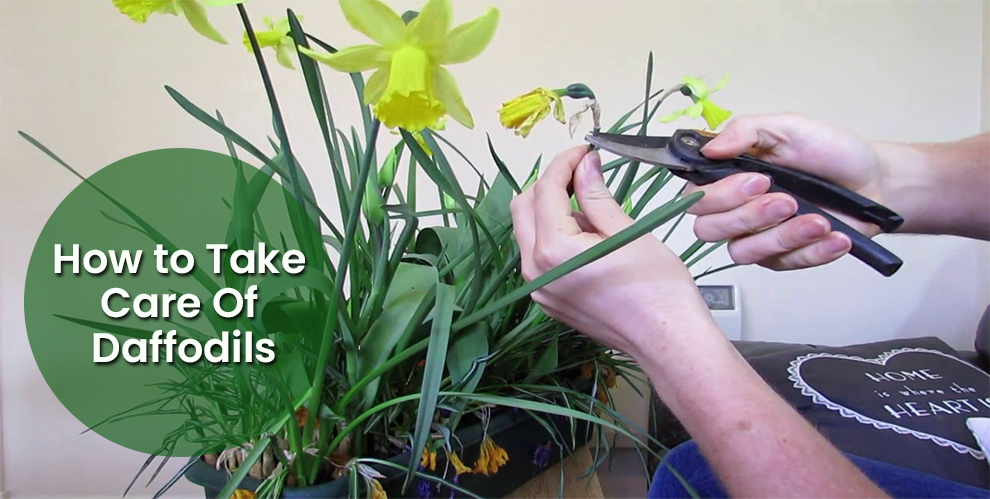
Daffodils are the most gorgeous and delicate perennial flowers that appear in the early spring season. Nothing will make your home garden more cheerful than these stunning spring-flowering bulbs.
The best part is that these sunshine-yellow blooms have good resistance towards deer, squirrels, and other rodents. However, most gardening enthusiasts often ask, “how to care for daffodils?”
Botanically known as the Narcissus, these bulbs are easy to plant and need minimal care post-plantation.
Daffodils grow best in USDA zones 3 to 8. They generally tend to rot when overwatered, so a well-draining spot works well to grow these plants. Plus, they do well in an area with full sunlight to partial shade. Make sure to use quality fertilizers for your daffodil soil to maintain its lush green foliage.
How To Plant Daffodils?
First things first, before you hop on to taking care of daffodils, you must know how to plant them correctly.
Planting daffodils is fairly easy when you provide them with optimum growing conditions. Let’s take a look at how to plant these lovely spring bulbs.
A. How Deep To Plant Daffodils?
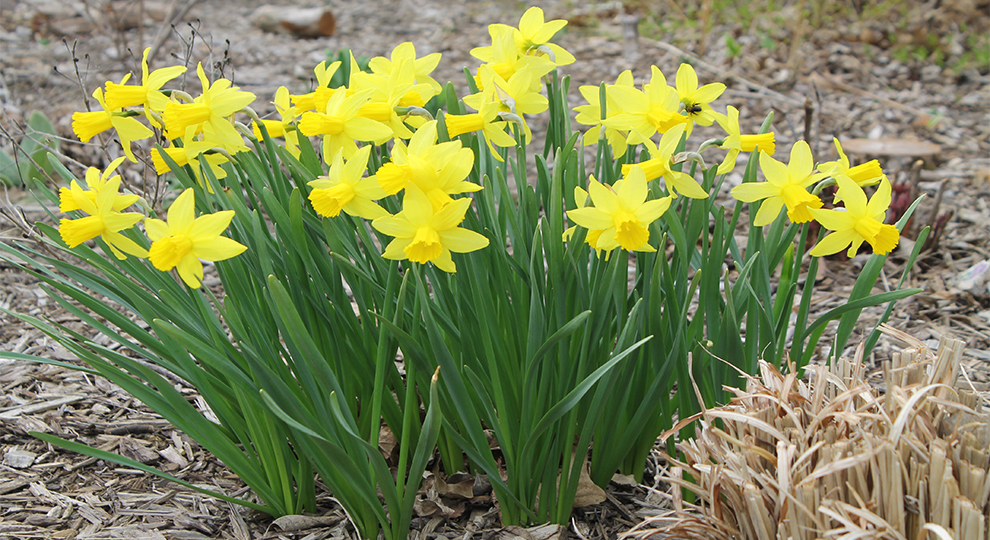
According to the American Daffodil Society, it is best to create a hole at least thrice as deep as the size of your daffodil bulb. Just make sure to check your daffodil bulb’s height because it may vary for different varieties.
Dig a hole as deep as 5 inches in the spot where you want to plant daffodils. Make sure to leave at least 1 foot of space between each plant.
You should plant daffodils in the fall when your soil temperature drops to 60 degrees Fahrenheit.
Select a suitable spot to plant your daffodil bulb. Make sure it gets a minimum of 6 hours of full sunlight every day in the spring season. If you keep it in a site with partial shade, it may not flower and develop with thick green leaves.
Remember to prepare well-drained soil to help in keeping your plant healthy. Even though these plants can thrive in dry sites, they are resistant to growing in waterlogged soil.
If you are thinking about planting a daffodil plant indoors, you should bury it partially in the soil surface.
B. Planting Daffodils Bulbs (How To Grow It)
While planting the daffodil bulb in the hole, make sure to keep its pointy side up. It’s the point from where a plant’s leaves will grow. So, when comes to taking care of daffodils, make sure to add a layer of mulch around your plant base.
It will prevent weed formation in the soil and help in keeping it moist. Take care to supply your plant with an ample amount of water immediately after planting it.
C. When To Plant Daffodils?
Fall is the best time to cover your residential garden with beautiful daffodil bulbs. This season can particularly fall anywhere between September to November end. It will however vary based on the area in which you live.
The best thing is that you will be able to enjoy the daffodils bloom in the early spring or late winter season. This plant can comfortably flourish in high-quality and nutrient-rich soil.
How To Take Care of Daffodils?
Daffodils are very tough and need little care during the period of flowering. This stunning flower is a symbol of new beginnings as they bloom with the advent of a new season, i.e., early spring and late winter.
So, let’s take a look at some necessary tips on daffodil care outdoor.
A. Do Daffodils Like Rich Soil?
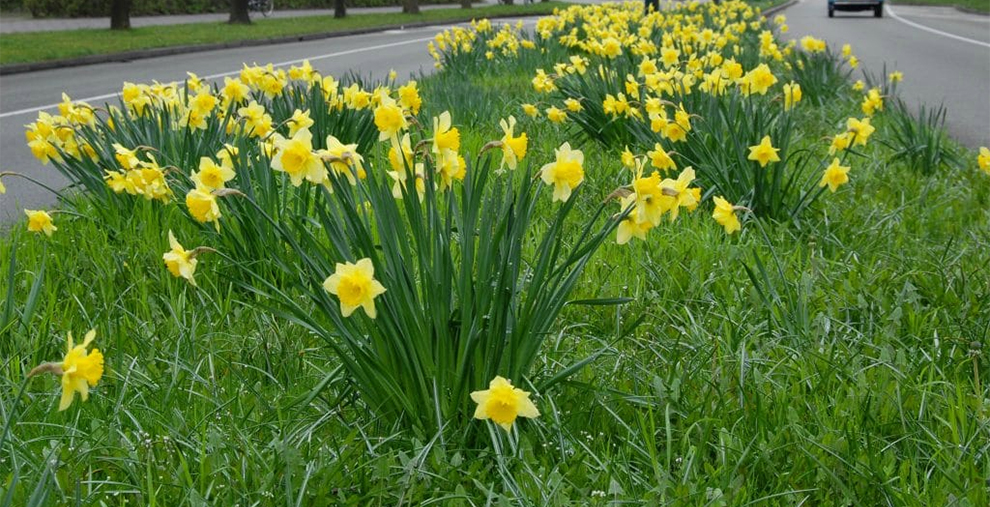
Most daffodils like to grow in nutrient-rich and moist soil. Make sure it has a pH range between 6.0 to 7.0, making soil neutral to somewhat acidic.
Most of the spring varieties prefer to grow and bloom in soil with good drainage otherwise they can get waterlogged and die. You should never leave them in soggy soils to keep them healthy.
B. How Often Do Daffodils Need To Be Watered?
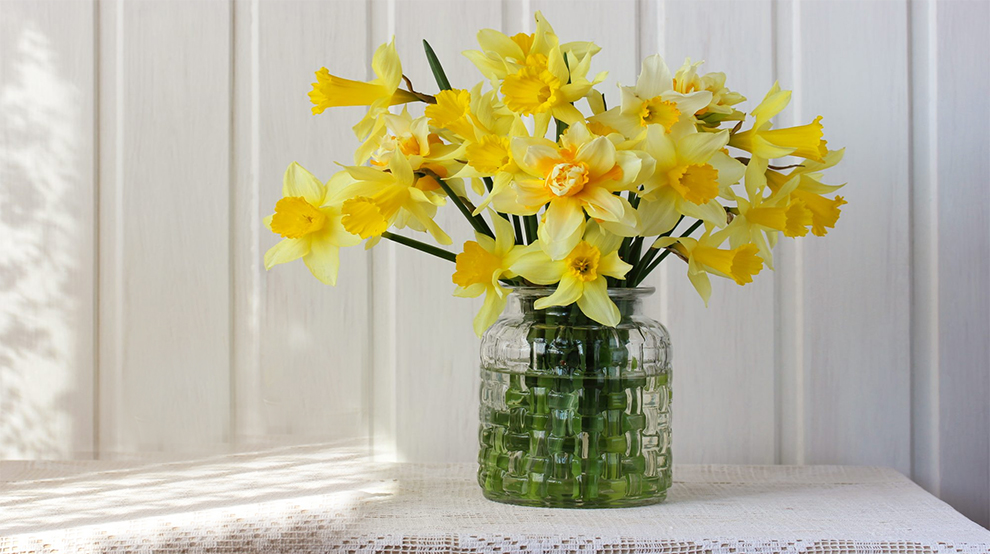
Daffodils can easily thrive even in a brief period of droughts. This means you don’t need to water it consistently. However, when they sprout in the spring or fall, make sure to water them regularly.
You can do it either by watering can or spring rains. Make sure to add about one inch of water to the plant surface every week. When you notice that your daffodils have started turning brown, usually in late spring or early summer, don’t water them thoroughly.
It’s because during summer daffodils enter a dormant stage and like drier soil. During this period these plants create a store of energy and nutrients for the winter season.
C. What Temperature and Humidity Levels Do Daffodils Need?
Daffodil plant care narratives that these plants are hardy to USDA zones 4 to 8. Their hardiness will, however, vary based on the type of daffodil you are planting. But most daffodils are planted during the fall season because they prefer to grow in cool soil i.e., during the dormant period.
Most of its varieties don’t prefer to grow in warm climates of southern regions. But if you plant them as annuals, they can thrive even in warm climates.
However, there are some divisions of daffodils, like division 8 (i.e., The Tazetta group), which require warmer weather to grow. Just make sure to pour it with enough water to offer optimum moisture to the soil.
Overall, you can expect daffodils to do well in well-drained as well as arid soils.
D. Do Daffodils Need Fertilizers?
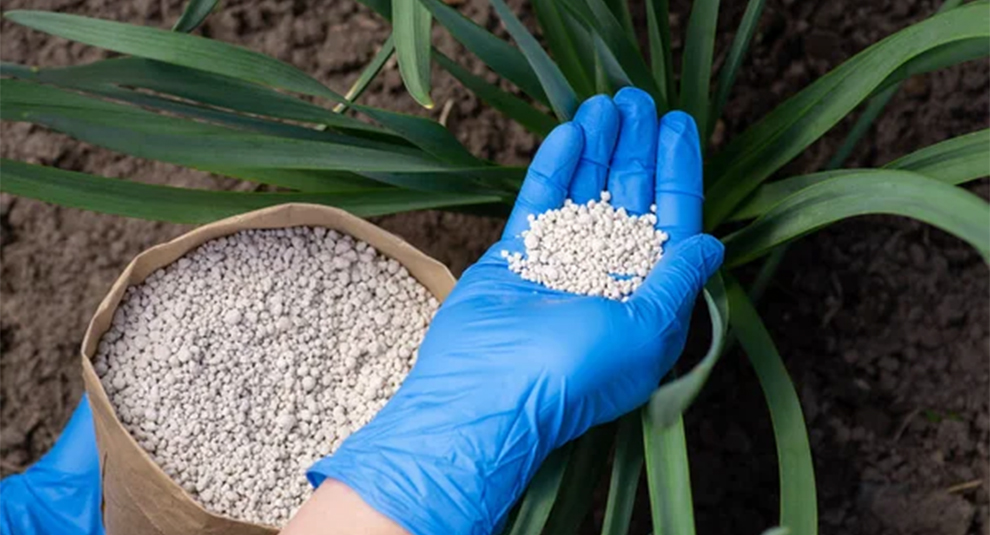
When it comes to daffodil care outdoor, fertilizers play an important role. You should fertilize it to improve its beautiful colors and trumpet-like shape. Even though they are highly self-sufficient, fertilizing your plants has been always helpful.
It will help them to bloom happily and grow lush green leaves. You should add a few-inch layer of fertilizer at the base of the hole that you create to plant daffodils.
Many people also ask, “How to take care of daffodils after they bloom?”. So, when your plants bloom, it’s best to feed them with good quality fertilizers like bone meal or bulb food, to enhance their spring color.
You can also use a mixture of water and liquid fish emulsion fertilizer around the daffodil bulb to get good results. Check the label instructions given on the fertilizer’s packaging to add the right amount of fertilizers to your plant.
E. Do You Cut Back Daffodils After They Bloom?
No, you should not cut back daffodils after they bloom. You should prune them only when their leaves start turning yellow and blooms fade.
You should carefully cut the top section of each flower stem to avoid the formation of seeds. As for the foliage, just wait for it to turn completely yellow before pruning it. It’s because even after daffodil flowers die, they continue to soak nutrients for about 6 weeks.
F. Should You Deadhead Daffodils?
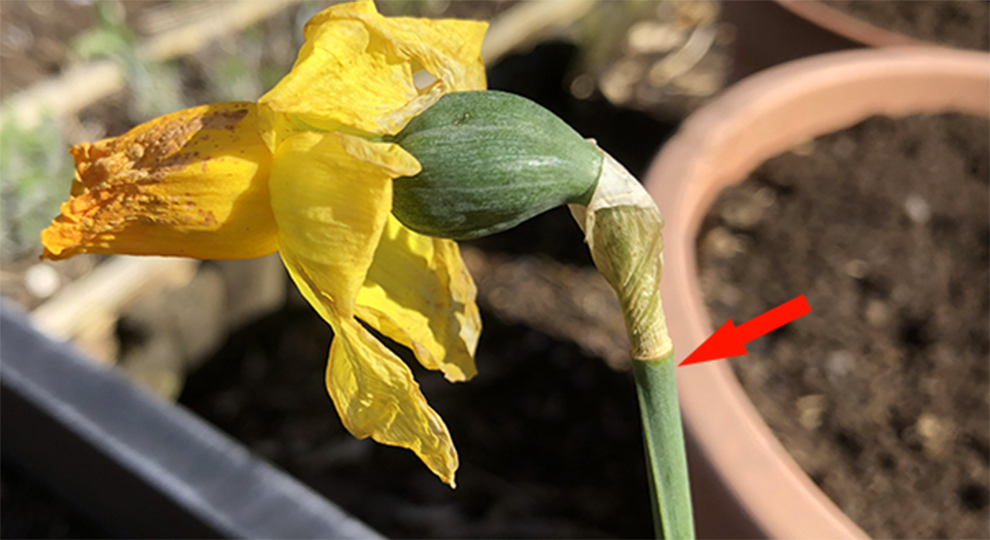
It is not important to deadhead daffodils when it comes to daffodil plant care. But you can carefully do this vital task after the daffodils bloom fades. Just notice when your flower starts turning brown and wrinkly.
When it comes to deadheading daffodils, it may appear to be a simple process, but it should be done carefully. Don’t go about trimming the entire stem from the base.
Instead, you should just pluck the dead blooms, around an inch of the stalk and the seedpod below the flower.
Overall, deadheading will help your daffodil bulbs to mature healthier and bloom happily in the spring season.
G. Repotting and Propagation of Daffodils
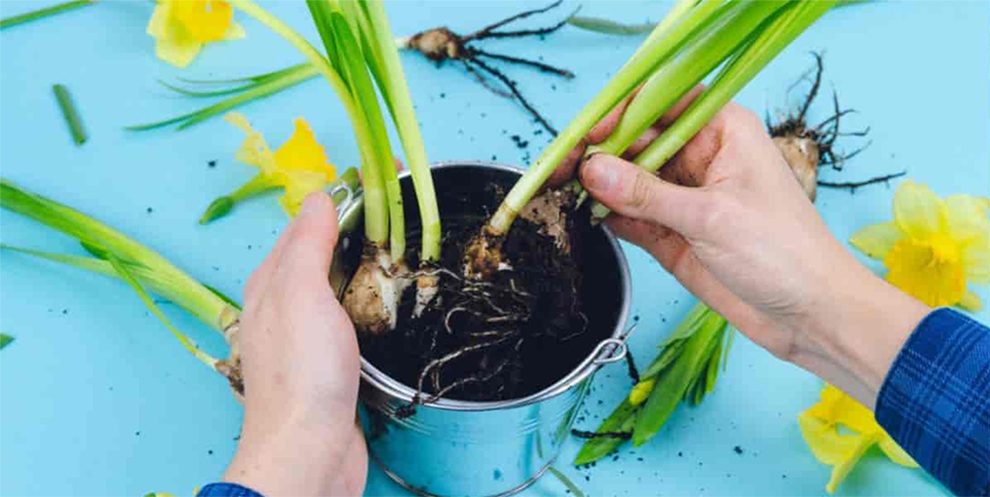
When it comes to daffodil care indoors, you can conveniently grow them in a pot for about 3 years. Just make sure to container has enough space for the plant roots to spread easily.
Make sure to select a large pot of about two gallons to plant a standard-size daffodil. If you want to grow small daffodil plants, choose a pot of about one gallon. Make sure it has good drainage with enough holes.
Add about 2/3rd of the commercial potting mix to the plant. Carefully cover the bulbs with soil and adequate water. Keep the container in a cool area with a temperature of about 50 to 60 degrees Fahrenheit and water it consistently.
When you notice green shoots developing, just move them to a spot with bright sun. Add fertilizers to promote effective growth. Remember when you give them favorable conditions, they will grow effectively.
On the other hand, if you don’t focus on daffodil plant care it can lead to issues like diseases and pest attacks.
Related: Planting tulips and daffodils together
Pests and Diseases That Affect Daffodils
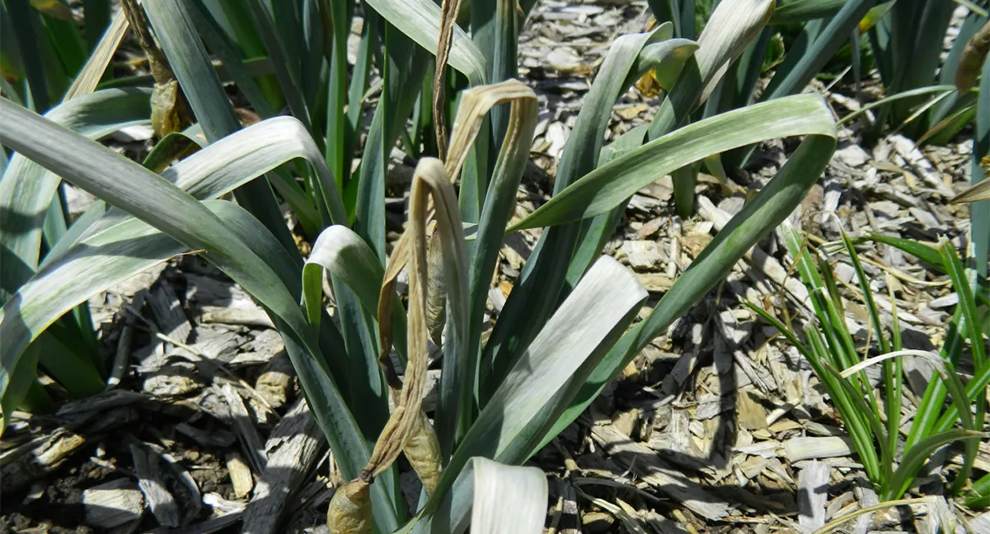
Daffodils are known to be resistant to pest attacks and diseases. So, when any problem occurs, people may panic. Look at the problem, if it is a rotting bulb, it can be because of keeping your plant in soggy soil.
Likewise, it can also get attacked by the yellow stripe virus which can form yellow and brown strips on daffodil foliage. Plants affected by such problems should be taken off and disposed of immediately.
Several other issues can hamper the daffodil growth process. Bulb mites can attack miniature daffodils grown indoors by making them weak. You can control it using pesticides.
Similarly, narcissus bulb flies can lay a cluster of eggs at the bottom of the plants. It can hatch and produce larvae or several maggots in every bulb that is infected.
In this case, the best thing that you can do is just throw away the infested bulbs.
Daffodil Care Indoors
is an important aspect to get beautiful blooms for a long period. It adds a fragrant breath of spring to your indoor space. So, here check out some effective ways to take care of your daffodils indoors.
- Make sure to place the plant container near a window. It is important so the daffodil gets bright indirect sunlight for healthy growth.
- Place it in a cool temperature between 50 to 70 degrees Fahrenheit to help it bloom for a longer period.
- Remember to check the soil in the container at least one or two times every week.
- Check the top inch of the soil. If it appears dry, make sure to water it. Don’t let the soil absorb too much water otherwise, it can damage your plant.
- Once the daffodils bloom starts fading, remove the flower underneath the swollen base.
- After this, add a balanced fertilizer to the plant soil at least once every 2 weeks.
- After the frosty days are over, shift your container outdoors in bright, direct sunlight. Remove the yellow foliage after 6 to 8 weeks of the blooming period.
- Now you can transplant the daffodil bulbs to a spot with good drainage and full sunlight.
How To Care For Daffodils – Daffodil Flower Care After Blooming
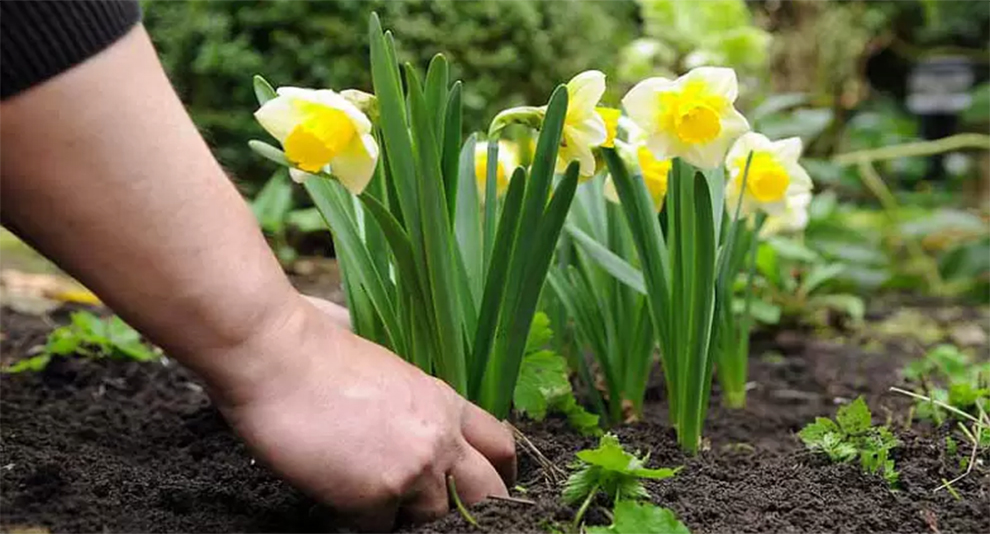
After your daffodil spring bulbs bloom, just allow them to die off naturally. You don’t need to water them more often. Don’t prune them before their leaves dry out and turn completely yellow.
If you wish, you can store your bulbs or leave them in the ground to grow again in the new season. When it comes to getting rid of dead daffodil plants, simply cut it from the base or lightly twist and pull out the leaves.
Remember daffodil plant care is of utmost importance to grow a fresh bunch of spring blooms effectively.
Once the blooming season pass, make sure to deadhead the flowers which have turned brown. Similarly, make sure to get rid of any wilted flowers. If you see any yellow leaves on your plant, leave them to turn fully brown, and then you can trim them.
